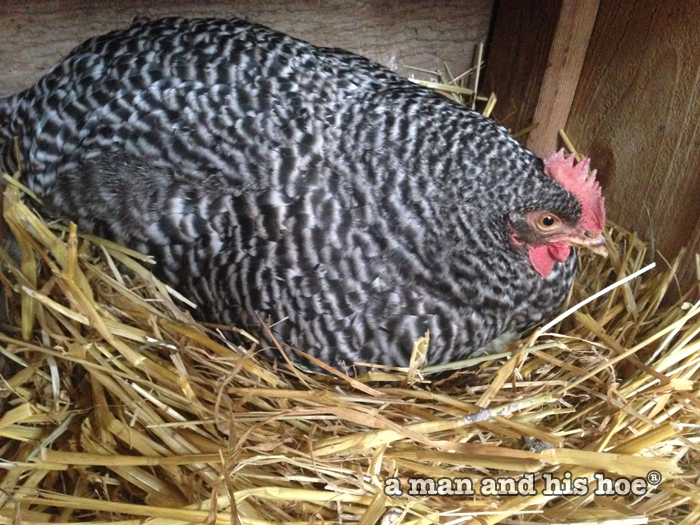Your cart is currently empty!
Month: March 2014
-
Spring Battles
Spring sets life into motion. It’s also a time of heightened competition between the roosters. I culled one of the roosters today when he and Sven, the Swedish Flower Chicken rooster picture below, got into a vigorous fight, and both ended up quite bloody.
It won’t be long before the rhubarb will be tall enough to eat. The first rhubarb picking is a mini festival here at a man and a hoe®.



-
Five Blossoms

Five open blossoms is what it takes for the meteorologists in Japan to proclaim that the cherry blossoms have bloomed in a city. In each city, there is one tree which is declared the reference tree, and when five blossoms on that tree have opened, a declaration is made that the cherry trees have blossomed in that city. There are even reference trees in waiting, just in case the reference tree dies.
We had more than five open blossoms on our reference tree here at a man and his hoe®. So I declared yesterday that our cherry trees were in bloom. There are still many buds about to burst open. A few more sunny days, and our reference tree will be in full bloom.
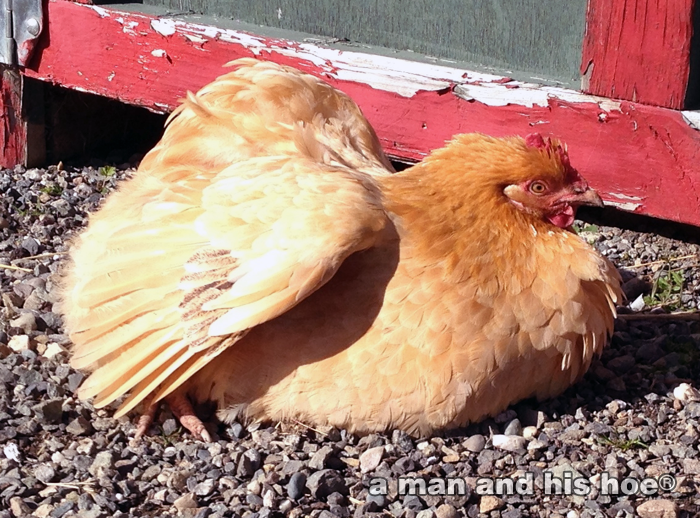
Speaking of sunshine, chickens love sunshine. They can spend hours sunning themselves in the warm sunshine. You’ll see them turning on their sides and lifting their wings to really air out.
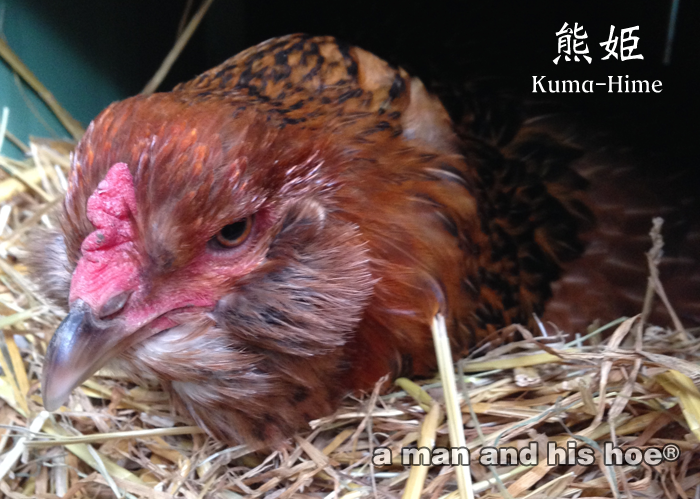
Dinosaur? Look closely into a chicken’s eyes, and it’s not difficult to see that birds are what dinosaurs evolved into. A chicken’s beak is a formidable weapon. It’s a good thing they are much smaller than us.

How long has that rock been there? The moss knows.
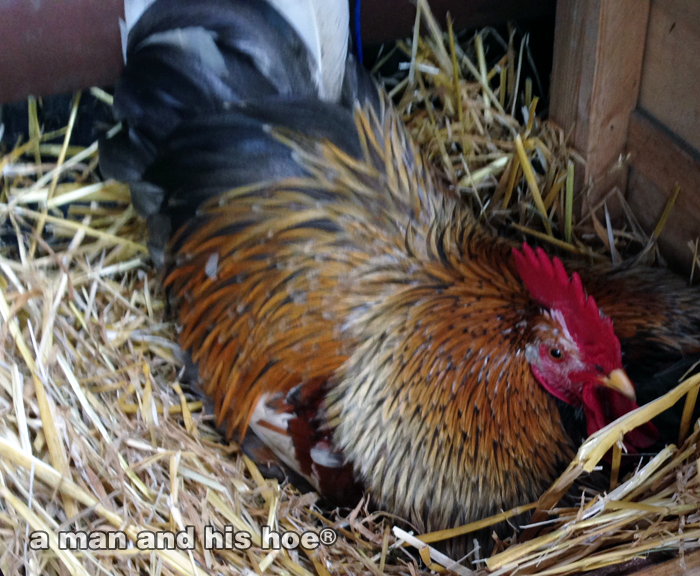
And what is this? A rooster sitting on a nest? I’ve read that roosters will sometimes sit on a nest to let hens know that they’ve found a good place to lay an egg. Sven spent more than an hour on this nest this morning. At times he even got up and clucked like a hen. He did entice one hen to sit on the nest, but she didn’t stay long enough to lay an egg. Maybe he’ll have better luck tomorrow.
-
Counting Eggs and More
Tomorrow is egg delivery day. Most of the eggs are used by Tweets Cafe, but some are destined for retail sale. Those cartons get special treatment so that when customers purchase them and open them, they get a nice surprise with a varied collection of eggs.
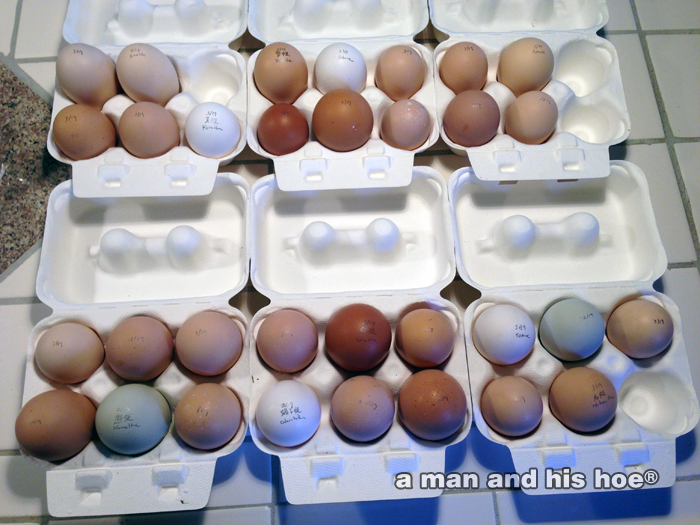
Billy is no longer the top rooster. His position has been usurped by younger, more vigorous roosters. During the day, he keeps to a quiet part of the farm where the other roosters don’t venture much. He does have the company of many hens, which keep him happy. Here he is with Niji-hime and Imelda.
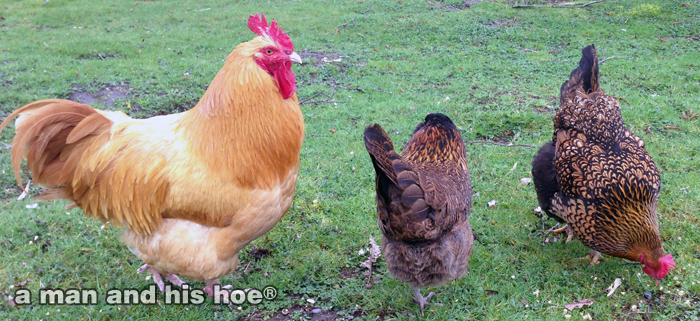
The sun came out, and this hen spread her body against the warm pavement to soak in the heat.

The skunk cabbage, lysichiton americanus, are up. They do smell like skunk, though not nearly so strong, though sometimes when there is a breeze blowing from their direction, you wonder what has died. Lysichiton camtschatcensis, the variety which grows in northern Japan and far eastern Russia has white blooms.

This time of year, there is so much happening. The arugula I planted last week is up. Much of the arugula you find in restaurants this time of year comes from the deserts of California. On a recent field trip to Charlie’s Produce in Seattle, I learned that due to the warmer than usual winter in California, farmers there are having a hard time growing this cool loving crop.

-
Hazel
Hazel is nine months old. Here are some pictures of her from June of 2013, July of 2013, December 2013, and March of 2014. She has stunning patterns on her feathers, and with her naked neck, she cuts quite the pose. At a man and his hoe®, every chicken is special.

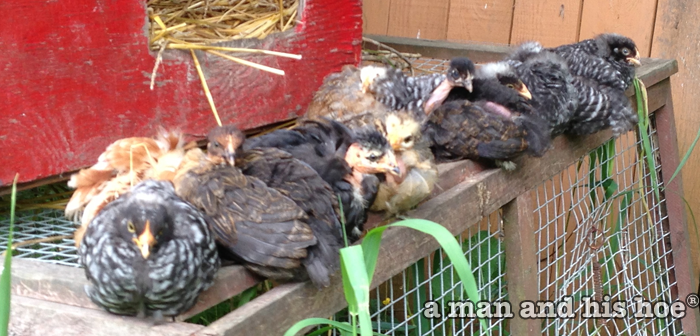
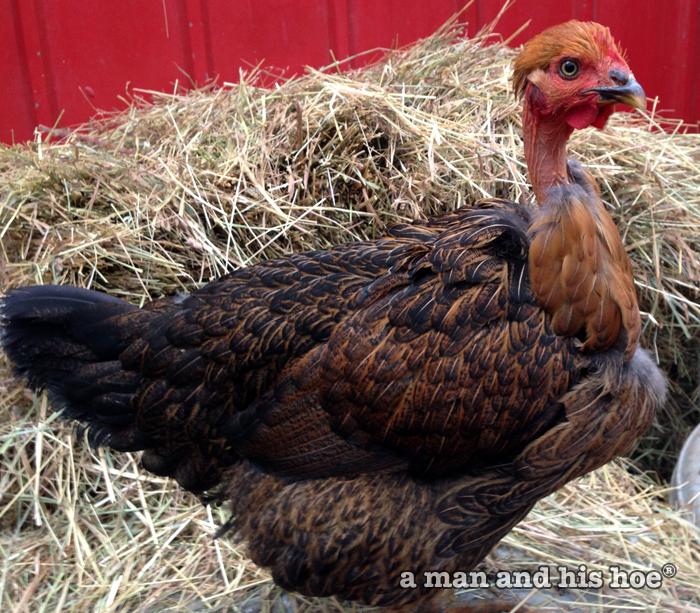

-
Heat
Chickens are but a part of a man and his hoe®. The 800 garlic I planted last fall are shooting up. Come May, the garlic bed will provide a bounty of garlic scapes to enjoy. Much of this is made possible by all the manure the chicken produce. Every few months, I start a new compost pile. The current one is heating up. Much of this week it has been around 130ºF. It’s a bit cooler today as I thoroughly broke it down yesterday and rebuilt it. It will be hot again tomorrow. A good reference for composting, is The Science of Composting by the University of Illinois Extension.
Every time I turn the compost pile, I’m always amazed at how full of life it is. There are countless tiny creatures as well as billions of microscopic bacteria, fungi, and actinomycetes. Turning the compost pile immediately attracts many chickens. The pile contains a feast for them, and stirring it up makes it easy for them to snatch their favorite things. It’s like a fast food joint for them.
The brooding hen has ten days left before her chicks hatch. Does she have any idea how busy she will be then? What is going through her mind as she patiently waits?
It’s been a cool, drizzly day. When the hens have had enough of being out in the wet, hanging out under the eaves is popular.


